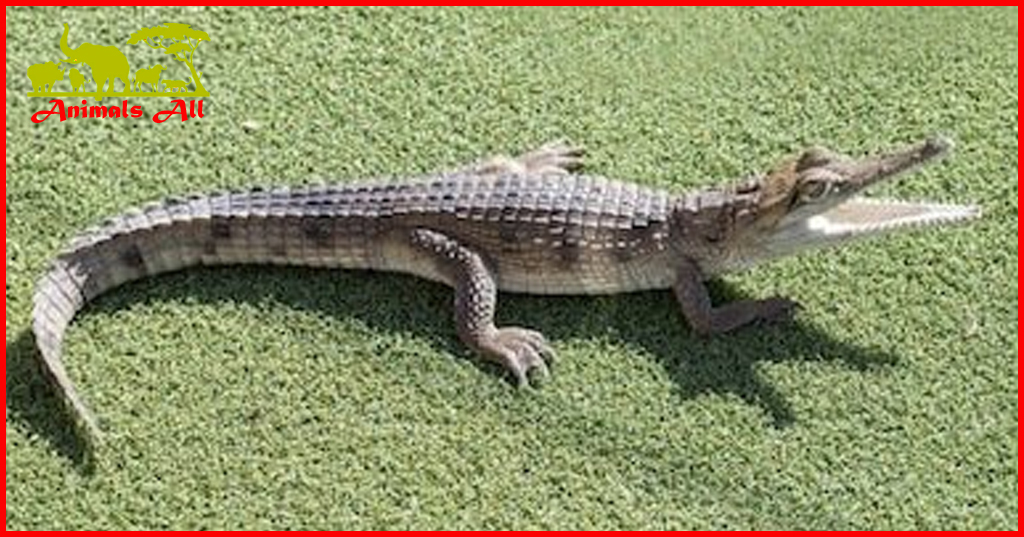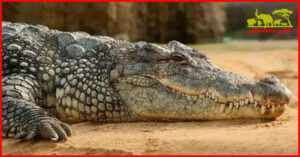
The World’s Smallest Crocodile: Surprising Facts
Crocodiles are fascinating creatures, but have you ever heard of the world’s smallest crocodile? Let me introduce you to the West African Dwarf Crocodile, also known as the African Dwarf Crocodile. This remarkable species holds the unique distinction of being the smallest crocodile in the world, making it a captivating subject of study and conservation efforts.
Raising awareness about lesser-known and endangered species like the African Dwarf Crocodile is crucial in ensuring their survival. While popular species often receive significant attention, it’s important to shed light on these lesser-known creatures that play a vital role in maintaining ecological balance.
Now, let’s embark on a journey to explore the intriguing world of the African Dwarf Crocodile and uncover the remarkable facts that make it a true wonder of nature.

1. The West African Dwarf Crocodile
The West African dwarf crocodile, also known as the African Dwarf Crocodile, is a fascinating species that holds the title of the world’s smallest crocodile. It typically reaches lengths of up to 1.8 meters (5.9 feet) and has a heavily armored body, with a dark color on the back and sides and a yellowish belly adorned with numerous black patches. This unique physical appearance sets it apart from other crocodile species.
Habitat Preferences
The West African Dwarf Crocodile has specific habitat preferences, favoring swamps and swamp forests, particularly areas with standing or slow-moving bodies of water. These ecosystems provide essential resources for the crocodile’s survival and are integral to its way of life.
Conservation Status
The West African Dwarf Crocodile is classified as Vulnerable on the IUCN Red List of Threatened Species and is listed on CITES Appendix I. These designations highlight the urgent need for conservation action to protect this remarkable species from further decline.
Conservation Tip:
Including relevant images of the West African Dwarf Crocodile in its natural habitat or conservation efforts being undertaken can enhance the reader’s understanding of the crocodile’s environment and conservation challenges. These visuals serve to underscore the significance of preserving this species for future generations and highlight the ongoing efforts dedicated to its protection.
2. Habitat, Behavior, and Adaptations
The West African Dwarf Crocodile, also known as the African Dwarf Crocodile, thrives in the unique ecosystem of swamps and swamp forests. These habitats serve as crucial lifelines for the survival of this remarkable species. The crocodile’s ability to adapt to its environment over time is evident in its nesting and hunting techniques.
Swamps and Swamp Forests
The crocodile primarily resides in swamps and swamp forests, relying on these environments for shelter, breeding, and access to its prey. The intricate network of waterways and vegetation in these areas provides essential resources for the crocodile’s sustenance.
Nesting and Hunting Techniques
Nesting behaviors of the West African Dwarf Crocodile are fascinating to observe. The female crocodile meticulously selects nesting sites near the water’s edge, creating shallow burrows or utilizing hollows of low-lying tree branches for protection and incubation of eggs. Additionally, the crocodile has honed its hunting techniques to effectively capture fish, crustaceans, amphibians, and possibly some terrestrial prey species.
Visually appealing infographics or diagrams can vividly illustrate the physical adaptations of the African Dwarf Crocodile. These adaptations showcase how the crocodile has evolved to thrive in its specific habitat, making it an intriguing subject for further exploration.
By delving into the intricate relationship between the West African Dwarf Crocodile and its habitat, we gain a deeper appreciation for the species’ resilience and the delicate balance that sustains its existence.
3. Threats to Survival and Conservation Initiatives
The West African Dwarf Crocodile faces significant threats to its survival, primarily due to habitat destruction and illegal poaching. As a vulnerable species, these threats are causing a decline in its population numbers. Here are the main reasons behind this decline:
- Habitat Destruction: Human activities like deforestation and urban development are destroying the crocodile’s natural habitats, similar to what is happening in Uganda. This leads to two major issues:
- Fragmentation: The crocodile’s habitats are being broken up into smaller pieces, making it harder for them to move around and find food.
- Loss of Ecosystems: Entire ecosystems that the crocodile relies on for survival are disappearing.
- Illegal Poaching: There is a high demand for crocodile skins and meat, which has led to unsustainable hunting practices. This is especially dangerous for the already vulnerable population.
These factors have made it necessary to take immediate action in order to protect the species from further harm.
“Habitat destruction and illegal poaching pose grave threats to the West African Dwarf Crocodile. Urgent conservation measures are needed to ensure its survival.” – World Wildlife Fund
Conservation Efforts
In response to these threats, various research and conservation projects have been launched:
- Protecting Habitat: Efforts are being made to preserve and restore the crocodile’s natural habitats. This includes initiatives like reforestation and creating protected areas.
- Raising Awareness: Public education campaigns are being conducted to inform people about the importance of conserving this species and its habitat.
- Combating Wildlife Trade: Measures are being taken to crack down on illegal poaching and trade of crocodile products. This involves strengthening law enforcement efforts and implementing stricter regulations.
- Community Involvement: Local communities are being actively engaged in conservation activities, drawing inspiration from successful projects in Uganda. This not only helps in gaining their support but also ensures the sustainability of these initiatives.
“Conservation is a race against time, and we need everyone’s help to protect the West African Dwarf Crocodile and its habitat.” – Save The Crocodile
These efforts are being carried out through collaborations between conservation organizations, governments, and local communities. By working together, we can hope to make a positive impact on the survival of this incredible species.
Role of Community Engagement
Success stories and case studies of local communities actively involved in conservation efforts serve as inspiring examples of proactive engagement in protecting the West African Dwarf Crocodile. These initiatives not only contribute to the preservation of this remarkable species but also highlight the importance of community participation in conservation endeavors.
4. Breeding Strategies for Survival
Breeding is crucial for the survival of African Dwarf Crocodiles as it ensures the continuation of their species. Here are some interesting facts about their reproductive behavior and the challenges they encounter during the breeding process:
Formation of Breeding Pairs
African Dwarf Crocodiles attract potential mates through courtship rituals that involve vocalizations and physical displays. Once a pair is formed, they establish a territory and defend it against intruders. The formation of breeding pairs is essential for successful reproduction and contributes to the overall population stability.
Importance of Nesting Sites
Nesting sites play a vital role in the breeding strategies of African Dwarf Crocodiles. Females carefully choose suitable locations near water bodies, usually on riverbanks or in dense vegetation. These nesting sites provide protection and maintain optimal conditions for egg incubation. This behavior shares similarities with alligators that also exhibit careful selection of nesting areas.
Challenges During Incubation Period
After laying their eggs, females actively protect the nest from predators and ensure ideal temperature and humidity levels. However, the incubation period presents unique challenges for survival:
- Extreme weather events like heavy rainfall or drought can harm egg viability.
- Human activities such as habitat destruction and disturbance can disrupt nesting sites, further endangering hatchlings.
Marine reptiles face similar challenges during their nesting period, with most species having specific requirements for successful reproduction.
Vulnerability of Hatchlings
Once the eggs hatch, vulnerable hatchlings face many threats in their early life stages:
- They are highly prone to predation by birds, larger reptiles, and mammals.
- Only a small percentage of hatchlings survive to adulthood due to various natural and human-induced factors.
To depict crocodile parental care, accompanying photographs can show adult crocodiles gently carrying hatchlings in their jaws or guiding them towards water sources. These images highlight the remarkable nurturing instincts exhibited by these fearsome creatures.
The breeding strategies of African Dwarf Crocodiles demonstrate their ability to adapt and persevere despite reproductive challenges. Understanding and safeguarding these strategies is essential for ensuring the long-term survival of this unique crocodile species.
The Delicate Balance: Sustaining Biodiversity
Preserving biodiversity is crucial for maintaining ecosystem balance. Every species, no matter how small, plays a significant role in the intricate web of life on our planet.
Supporting organizations dedicated to protecting endangered species like the African Dwarf Crocodile through donations or volunteering can make a tangible difference in conservation efforts.
Our collective efforts, whether through individual actions or global initiatives, are essential in ensuring a sustainable future for these remarkable creatures and the diverse ecosystems they inhabit.


One thought on “The World’s Smallest Crocodile: Surprising Facts”
Comments are closed.